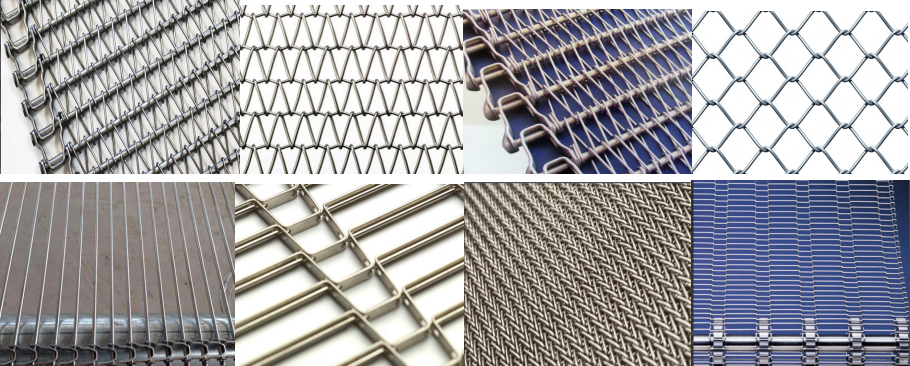A metal conveyor belt is a type of conveyor system made from interlinked metal components, designed to transport materials in industrial applications. These belts are known for their durability, heat resistance, and ability to handle heavy loads. Below are key aspects of metal conveyor belts:
Types of Metal Conveyor Belts
- Wire Mesh Belts
- Made from woven or welded stainless steel wires.
- Used in food processing, baking, cooling, and washing applications.
- Allows airflow, drainage, and easy cleaning.
- Chain-Driven Belts
- Consist of metal plates or grids driven by chains.
- Ideal for heavy-duty applications like automotive manufacturing.
- Perforated Metal Belts
- Feature punched holes for drainage, ventilation, or coating processes.
- Common in food processing and industrial baking.
- Balanced Weave Belts
- Smooth, flat surface with interlocking metal wires.
- Used in precision applications like electronics assembly.
- Hinged Steel Belts
- Made of interlocking steel hinges for rugged material handling.
- Found in scrap handling, recycling, and bulk material transport.
Materials Used
- Stainless Steel (304, 316) – Corrosion-resistant, ideal for food and chemical industries.
- Carbon Steel – Strong and economical for heavy loads.
- Galvanized Steel – Zinc-coated for rust resistance.
- Special Alloys (Inconel, Titanium) – For extreme heat/corrosion environments.
Advantages
✔ High Temperature Resistance – Can withstand ovens, furnaces, and freezing environments.
✔ Durability – Longer lifespan than rubber or plastic belts.
✔ Easy Cleaning & Sanitation – Preferred in food and pharmaceutical industries.
✔ Customizable – Various mesh sizes, widths, and configurations available.
Common Applications
- Food Processing (baking, frying, freezing, washing)
- Automotive Manufacturing (paint shops, assembly lines)
- Glass & Ceramics (annealing, tempering)
- Electronics (PCB soldering, component handling)
- Waste & Recycling (sorting, shredding)
Maintenance Tips
- Regularly inspect for wear, misalignment, or broken links.
- Lubricate chain-driven belts to prevent friction.
- Clean debris to avoid contamination (especially in food processing).
Post time: Aug-14-2025
